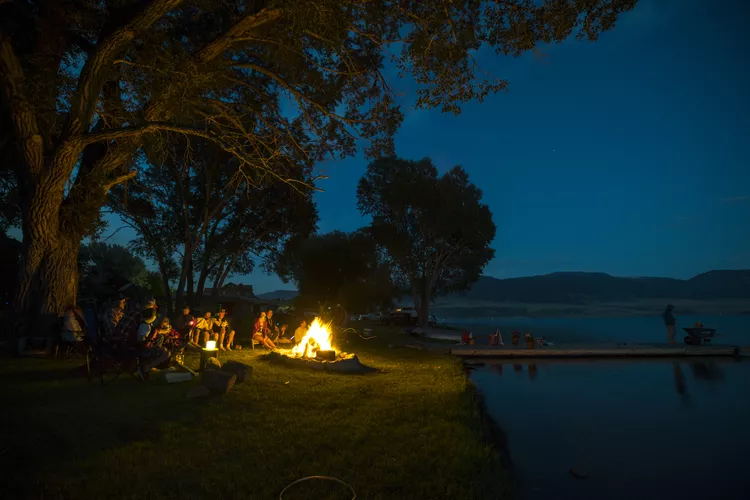Understanding Campfire Banking Techniques
For beginner campers, the term “banking a fire” is essential to grasp. Understanding how to properly maintain a campfire is crucial not only for fire safety but also for maintaining cleanliness in campgrounds for fellow campers. Banking a fire is indeed a common sense camping tip and a simple skill to master.
Banking a Fire
Banking a fire is a vital skill every camper should have. It effectively keeps your fire burning throughout the night, minimizing the need to restart it every morning. Banking, in essence, involves building a wall out of rocks or stones around the fire pit or situating the fire next to a natural barrier like a rock or dirt wall to shield it from the wind. If the coals are adequately protected, they will generate enough heat to facilitate reigniting a fire in the morning.
You may notice that many campgrounds come equipped with fire rings at the campsites. These rings serve multiple purposes: they contain ashes, provide a cooking surface, and act as wind barriers. Fire rings are designed to effectively bank the fire for you. If your campsite lacks a fire pit, it’s essential to create your own to safely contain the fire. A properly constructed fire pit prevents ashes from blowing around and enhances the fire’s heat, providing warmth for campers around the ring.
Moreover, understanding campfire etiquette and safety is indispensable for any camper wishing to enjoy a campfire fully. Starting a campfire becomes straightforward when following the correct steps.
Campfire Tips and Advice
- Before igniting a campfire at a developed campsite, in national or state parks, or U.S. Forest Service dispersed camping areas, it’s critical to check the fire regulations and restrictions in the area. These rules can change seasonally, so ensure you consult a current fire restriction posting.
- If permitted at your camping location, gather wood for your campfire. Look for dry limbs, twigs, and leaves that are on the ground; avoid breaking branches from living trees. Some regions have restrictions on firewood gathering, so you may need to bring your firewood or purchase it from the campsite or local store.
- If your campsite includes a fire ring, utilize the existing fire pit. Do not move it or create a new one. If no pit is present and you’re allowed to establish a fire, apply your newly acquired skills to build a fire pit and bank the fire.
- Once your fire pit is prepared, you can initiate your fire. Place the dry leaves and twigs in the center of the ring, ensuring sufficient space for air circulation, and arrange the twigs in a cone or teepee shape.
- Around the smaller leaves and sticks, construct a larger teepee of branches and logs. Ignite the dry leaves from the bottom using a long lighter or matches.
- As the fire intensifies, continue to add larger logs around the teepee, carefully positioning them to prevent collapse.
- Always keep the campfire small and manageable. Never leave the campfire unattended, and ensure you extinguish it completely when it’s time to leave the camp.





